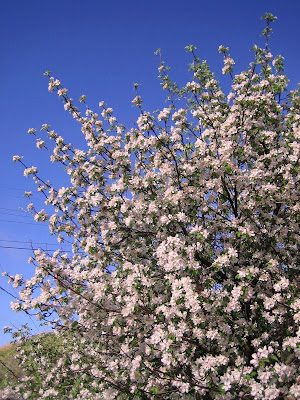Warm Springs Ponds and the 3 Rs (adapted from a KUFM radio commentary)
The three Rs of Superfund : “Reclamation, Remediation, and Restoration.”
If we go by the book, the three Rs have distinct definitions. Reclamation is the broadest term—something like a genus in biology. You know, like the genus “Canis,” which takes in wolves, dogs, and coyotes. Reclamation is a fuzzy notion.
Mining engineers define reclamation as “returning damaged land to a beneficial use.” British Petroleum-ARCO likes to call itself a “partner in responsible reclamation.” As the legally responsible party in the Clark Fork Superfund mess, BP-ARCO is responsible for a lot more than reclamation! But if BP-ARCO can pull off a cheap reclamation job that masquerades as remedy, it will do that. Look at the golf course or all those ball fields built on mine dumps.
Remedy is defined under federal Superfund law as the “removal or treatment of hazardous material to protect human and environmental health.” The removal of toxic mine waste along Silver Bow Creek is remedy. EPA oversees remedy, and the decision that makes it official is called a Record of Decision.
Restoration is a legal term defined under the state version of Superfund law as “returning injured natural resources to baseline conditions or otherwise accelerating the natural recovery process.” The construction of a functioning streambed and planting native vegetation along Silver Bow Creek is restoration. Montana oversees restoration.
My student, Michelle Sullivan, recently completed an undergraduate research project about the three Rs. Michelle interviewed federal, state, industry, and academic experts.. Surprisingly, half of these experts were as confused about the three Rs as were members of a lay audience.
Well, the real world is a complex place that simply does not easily conform to the language we invent in order to describe it. The intentional obfuscation of terms by BP-ARCO doesn’t help, either. Nor does the complicity of the EPA in allowing BP-ARCO sometimes to count superficial reclamation – i.e. cover-up – as remedy.
Still, the world is a complex place. Consider Warm Springs Ponds—2500 acres of beautiful, lush habitat along I-90. Despite appearances, the area is an industrial waste treatment facility for the polluted waters of Silver Bow Creek. Construction began in 1911, and work continues to this day. For example, in the early 1990s, ARCO removed more than 500,000 tons of contaminated sediments. And there are millions and millions of tons still in place—an amount probably exceeding what’s at Milltown. Furthermore, the concentrations of arsenic and other toxic metals are far higher than at Milltown.
Warm Springs Ponds faces an uncertain future. EPA, Montana, and BP-ARCO all have their fingers in the pie. EPA has not specified a remedy – or Record of Decision – for the area. In part, this is because remedy and restoration of Silver Bow Creek will take another decade or so.
Should remedy and restoration on Silver Bow Creek exceed all reasonable expectations and should the creek actually meet water quality standards, Warm Springs Ponds might no longer be needed for waste treatment. One could imagine a radical solution such as bulldozing the ponds back to the hillside in a vast dry-closure waste repository. Or, a trickle of water could be maintained over the ponds as a wet waste repository. Or, the ponds could be maintained very much as they are today.
Consider this last option—maintaining Warm Springs Ponds in perpetuity. There’s a good argument for this. Hundreds of resident and migratory birds depend upon the area; and it’s home to upland game and trophy trout. On a walk around the ponds last weekend, my family and I thrilled at the site of osprey snatching fish, sandhill cranes dancing and hooting, and Canada geese guarding their fuzzy yellow offspring. The area provides important recreational opportunities for bird watchers, anglers, waterfowl hunters, and dog trainers.
[below: eared grebe at the ponds, from
www.gobirdmontana.com]

Warm Springs Ponds will not take care of themselves. Maintaining the natural resources and recreational opportunities will cost money. Toxic muck will need to be dredged periodically and hauled to a repository, the ponds’ dikes will need to be monitored and kept safe against erosion, and trails and signage will need to be maintained. For these reasons and others, the future of the area must be secured--perhaps with an operations and management trust fund, something like the $50 million stash that Butte received from BP-ARCO for assuming oversight of the Butte Priority Soils remedy.
Recently, a diverse group of conservationists came together to deliberate this issue. Citizens included representatives from groups such as Trout Unlimited and the Montana Wildlife Federation as well as interested local folks. We do not yet know what the future will bring, but we do want to play an active role in shaping it. We don’t want reclamation masquerading as remedy.
For more news about Warm Springs Ponds and other Superfund issues, please check out CFRTAC’s website at hyperlink
www.cfrtac.org.








 And today, just before the blizzard blew it, it stood in all its full-flowered glory:
And today, just before the blizzard blew it, it stood in all its full-flowered glory:


































